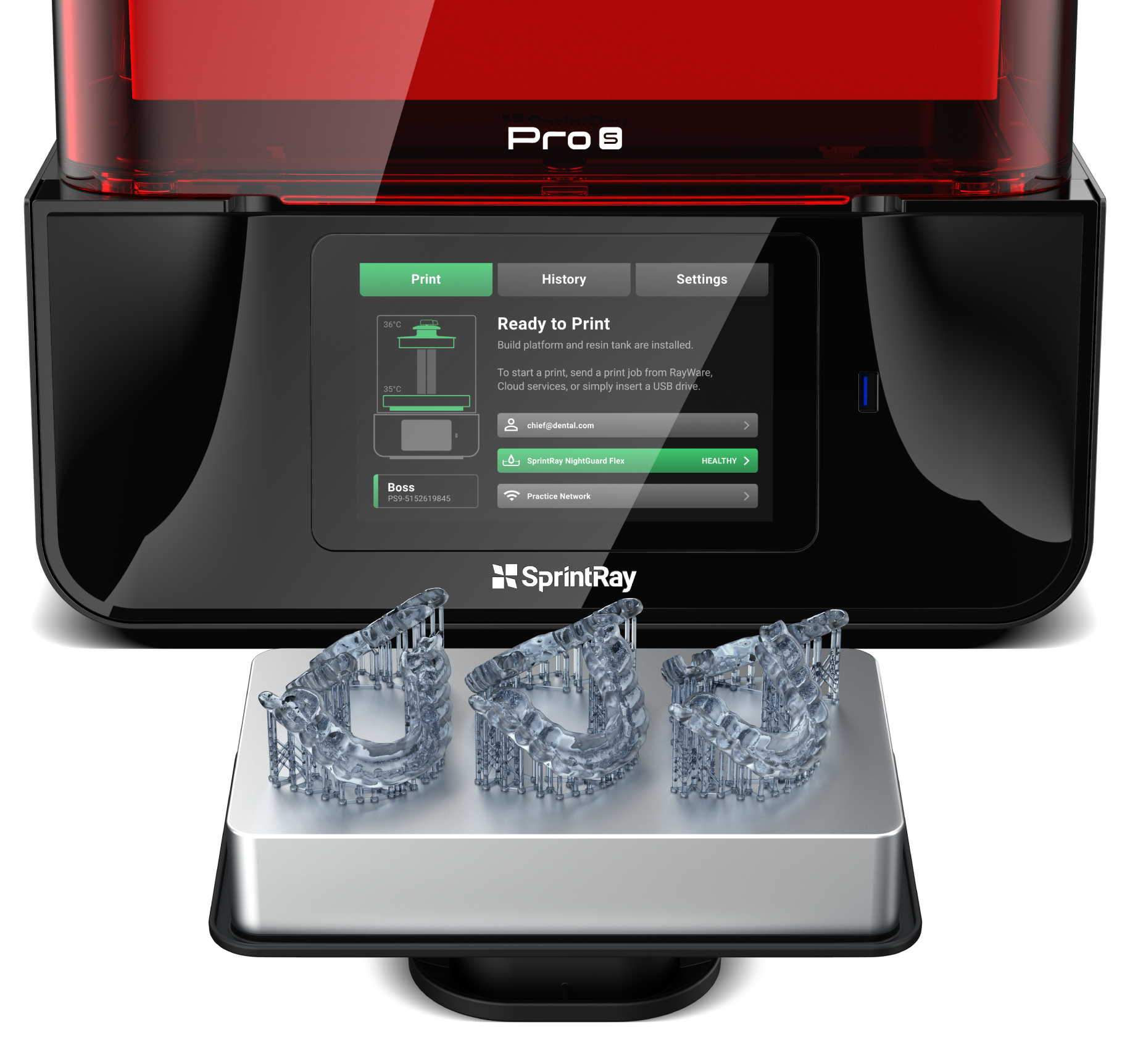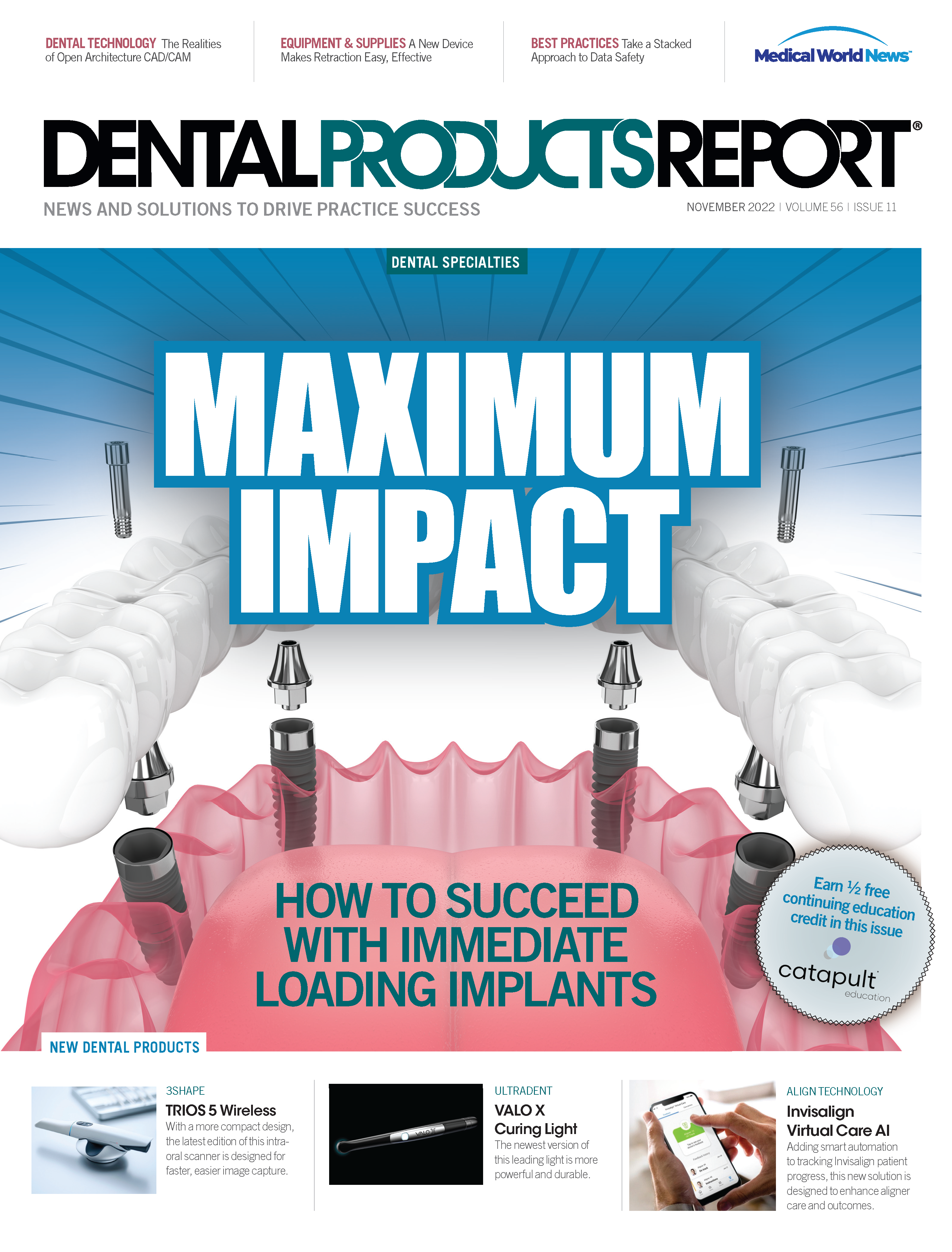Open Architecture and the Journey to CAD/CAM
The market has moved toward open architecture CAD/CAM, but the industry did not always operate that way.
SprintRay Pro 3D Printer

Let’s start this month’s column with a walk down memory lane. Do you remember the Sony Memory Stick? I’m not talking about a USB flash drive, which some people refer to as a memory stick. No, I’m talking about the Memory Stick that was made by Sony. If you weren’t like me, geeking out over all things techy in the very early 2000s, you probably have no idea what I’m talking about.
Back then, there were only a couple of types of portable flash memory cards. One was CF cards. They were about the size of a book of matches. And then there was the sleek Sony Memory Stick, which was thin, purple, and the size of a stick of gum.
Being an electronics company, Sony was hoping to corner the market on flash memory by making the Memory Stick the de facto standard. They made lots of electronics that utilized the Memory Stick. In fact, I still have an old 3.2-megapixel pocket camera with a Memory Stick slot.
Sony was hoping that if all of their high-end electronics only used Memory Sticks, that would lock users into buying lots of them. Alas, by the end of the decade competitors chose to use CF cards or the smaller SD cards that were made by a variety of manufacturers. Sony soon discovered that consumers wanted cards they could use in multiple devices, not 1 type for their Sony devices and something else for other electronics. So, the Memory Stick never really took off.
Today we buy memory cards and don’t really think about it. You buy a card and put it in the appropriate slot in your device and it just works. The cards are device agnostic, not caring what device they are inserted into. And that, my friends, is the gist of open architecture—hardware that connects and works with other hardware regardless of the manufacturer.
Closed Systems
In the early days of in-office milling, doctors had 2 options. There was CEREC and their competitor, E4D. Both systems sold an intraoral scanner, sometimes called an acquisition unit, and a mill. The scanner had design software built into it. The doctor would create a digital impression, design the restoration, and then send the restoration to the milling unit.
If you were a doctor who wanted to do in-house restorations, you had to buy one of those systems in their entirety. The good news was that the system worked. Since it was all created by a single company, you knew that everything communicated, and you had an efficient workflow. The main barriers were the cost of the systems and deciding which one to purchase. Both systems were sold exclusively through dealers. Patterson sold CEREC and Henry Schein sold E4D. Some doctors were hesitant about spending a large amount of money with a dealer that they didn’t buy from regularly.
The cost factor was significant. Both systems were more than $100,000, and there were rarely such things as discounts or deals. Doctors who invested in these systems needed to do a decent number of restorations every month to make sure their costs were covered. Some doctors didn’t like the idea of the need to stain and glaze restorations that were in the esthetic zone. For those doctors, these devices were posterior-only, and many chose not to invest in a machine with those limitations.
In the early 2000s I had a meeting with some of the folks from Sirona. At that meeting, internet connections were still mainly dial up. I suggested they build a modem into the system to allow the doctor to send the digital data to a lab. The lab could take the data, create a restoration, and then send the case to the doctor. I told them I could see a real market developing for digital impressions. In response I was told that the system was designed for same-day dentistry and that I just “didn’t get it.” I wish I had patented that idea.
I invested in a CEREC 2 unit from Sirona in the late 1990s. This was followed by a trade-in and upgrade to a CEREC 3, which was later upgraded to a CEREC 3D system. Although the upgrades worked and the system continued to improve, the upgrades were very costly. I got a little burned out by what I started calling “the upgrade treadmill.” I began to feel that as soon as I paid for an upgrade, I needed to start putting significant dollars in the budget for the next upgrade. Right or not, I grew tired of spending 10s of thousands of dollars to keep up. There was also the threat of obsolescence as companies would remind you that without upgrades you were soon out of luck with support.
That is one of the drawbacks to working with any closed system, not just with CAD/CAM. When any consumer is beholden to a single manufacturer there is the inherent temptation for the company to overcharge and underdeliver. This is not an indictment of the companies I’ve mentioned here. It is a fairly common occurrence in any business endeavor. Humans are humans and can be expected to act accordingly, especially when large amounts of money are involved.
As my CEREC 3D aged, I began to phase same-day restorations out of my practice. I was a doctor who still was using a lab in addition to CAD/CAM, so my lab cases increased.
Open Architecture
I wasn’t out of the game for long. I still believed in CAD/CAM, and in doing many cases in house. At the 2006 American Dental Association meeting in Las Vegas, Nevada, as I wandered the aisles of the exhibit hall looking for new and exciting things to write and lecture about, I came across a small booth for Cadent, a company selling a digital impression system called iTero.
The device brought to life my idea of doing impressions digitally, but then sending the digital info to your lab and letting the technician create the prosthesis. Shortly after meeting the folks from Cadent, I had an iTero 1.0 system in my office. It wasn’t long before my team got really good at digital impressions. The iTero was built on a platform of open architecture, which I was thrilled about.
Open architecture means hardware and/or software that connects to hardware/software from other manufacturers. Closed systems work only with other components from that system, whereas open systems will work no matter who the manufacturer is.
Here is a great example of what this all means for dentistry. Not too long after mastering the iTero, I was contacted by a company that was developing a mill for dental offices. They wanted to know if I would be interested in testing their device that was in beta.
When the mill arrived, we installed it, powered it on, and were ready to go. We scanned a case with our iTero, exported the file to a jump drive, and then put the jump drive into a computer that contained the mill’s design software. That design software opened the iTero file, and there was the digital impression on the screen in all its glory.
We quickly designed the case and sent it to the mill. Everything connected and everything worked. It was as though we had been doing that for years, only it had happened in less than an hour.
And that, my friends, is the essence of open architecture.
Recently, the team and I decided to get back into milling restorations in-house. I knew there were some materials on the horizon that would offer a lot of advantages, and I felt we had a decent grip on things.
The joy of open architecture is that you can pick what you want and make it work the way you want. Your choices are not dictated by a manufacturer that holds you to a specific model.
As we moved forward, we were already using 2 different iTero models in our office. Every member of the clinical team, including hygienists, could pick one up and use it immediately. We then looked at design software platforms. We didn’t need to worry about whether it would interface with our iTero—all digital impression systems create their files in a standard format that can be read by any design software on the market. Because of that, we explored ease of use, cost, support, etc., for different companies’ products. We settled on exocad because it did what we wanted it to. It was our choice and no one else’s.
We then began to evaluate mills. Once again, we were not limited by what would work with exocad. The design software outputs to a standard file format that can be used by any mill on the market. After doing our due diligence on mills, we selected the DGShape DWX-42W. Our choice was based on the needs of our office. There are lots of mills on the market. As with cars, there is no 1 model that is perfect for every customer.
Wrapping Up
Today, even formerly closed systems are now open architecture. The market spoke, and every company that I’m aware of moved in that direction. This is great news. Now you can pick and choose what best fits your office and its unique workflows and patient base.
This also means that if you buy a digital impression system today and in 2 years a better one comes along from another source, you can sell your current one and buy the new one. All the pieces of this workflow—impression scanner, design software, and mill—are interchangeable now.
You can arrange and rearrange these parts as you see fit. The workflow is custom tailored to your exact fit. In the not-too-distant future I’ll be writing a more detailed column about my journey. For now, though, remember that in-office milling is ready for primetime, and it will continue to evolve and get even better. However, since you can replace the parts whenever you like, the time to get involved with this is right now.
Oh, and did I mention that all that design output also goes to my SprintRay Pro 3D printer? That’s right, I have the option to mill or print things. That brings even more of this control into my office. That means it’s not just same-day crowns, it is same-day occlusal guards, study models, surgical guides, and anything else you can print.
This facet of our profession is exploding right now, and the biggest reason is open architecture. Embrace the change!
